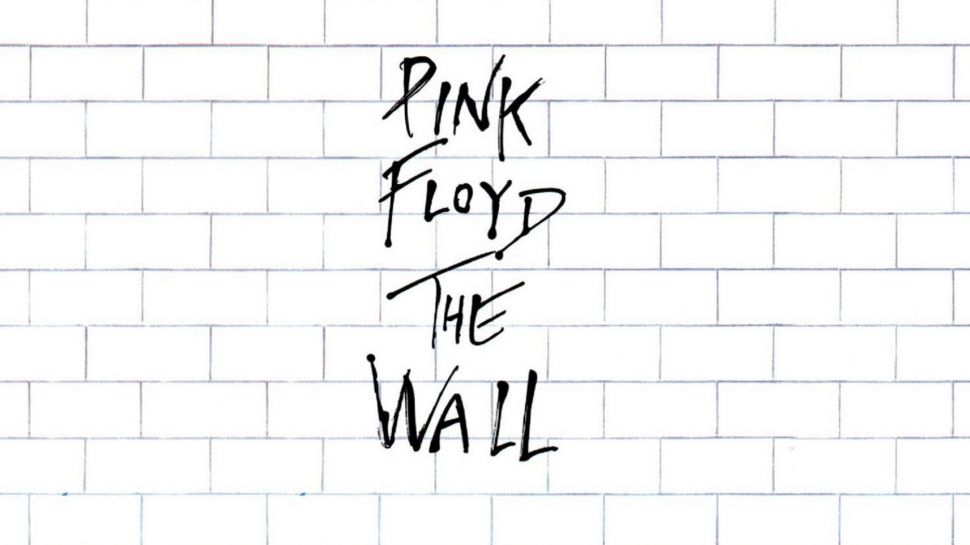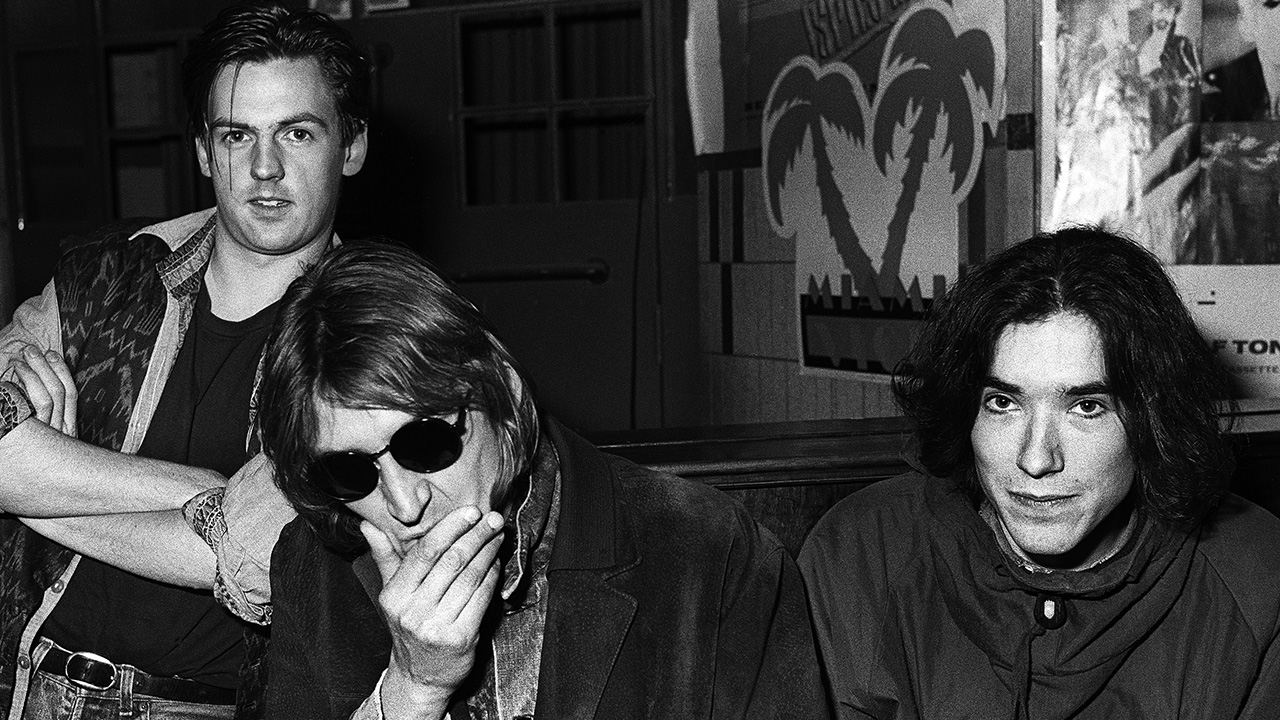Pink Floyd's The Wall: The secrets behind 1980's best-selling album
Pink Floyd’s The Wall was the best-selling album of 1980, and consumed the band for much of the early part of the next decade. It also caused irreparable structural damage to the band that eventually led to its collapse

"Sometimes I feel like the ship’s cook,” says drummer Nick Mason of his time with Pink Floyd. “I see various commanders come and go and when it gets rough you just go back down to the galley.”
In the early part of 1979, when Pink Floyd convened in Miravel in the south of France to record what would become their massive The Wall, bassist Roger Waters was very much the man at the helm of the giant prog rock band. Yet some 26 years down the line, as Pink Floyd once again found themselves in a frenzy of press interest after the Wall line-up reconvened – quite unbelievably, given the bitterness that had existed between certain members after Waters quit – to play at Live 8 in London’s Hyde Park, Floyd guitarist David Gilmour was the one who made the ultimate decision as to whether the band would even appear at the event. And with a new solo album, On An Island, due out this month, he made it reluctantly.
Anyone who followed the bickering and in-fighting in the ensuing years between 1983’s The Final Cut, Waters’ announcement in December 1985 that he was leaving the band, and the decision by Gilmour and Mason, along with keyboard player Rick Wright, to continue as Pink Floyd and release A Momentary Lapse Of Reason in 1987, would today not be surprised by the manner of the band’s falling out.
Back in the mid-80s, when all hell broke loose for the normally publicity-shy Floyd, it was a different matter entirely. Not least when it transpired that the straw that broke the camel’s back, so to speak, had been the building of the various massively successful The Wall-related projects.
When the four members of Pink Floyd who created The Wall spoke to Classic Rock back in 1999 (each individually, it should be noted), in the build-up to the release of Is There Anybody Out There?, the live record taken from the 28 The Wall shows in 1980, it was one of the first opportunities for facts to override speculation. And that’s exactly how it turned out.
With Waters having been painted as the domineering force in Pink Floyd, his assertion that his relationship with David Gilmour had “fallen to pieces during the making of Wish You Were Here” did not come as much of a surprise. What did, however, was how Gilmour viewed the scenario.
“I can categorically tell you that’s untrue. Roger wanted to be the leader and the boss and in charge, which he, de facto, was,” Gilmour said. Yet Gilmour also maintains that, from his point of view, all was fine during the making of The Wall, despite him having only three co-writing credits.
Sign up below to get the latest from Prog, plus exclusive special offers, direct to your inbox!
“There’s a lot of misconceptions about the start of major hostilities between myself and Roger,” he said. “We had a highly productive working relationship that operated pretty well through The Wall. There were some major arguments, but they were on artistic disagreements. The intention behind The Wall was to make the best record we could.”
Released in November 1979, The Wall stands as Pink Floyd’s grandest statement, presenting them as the major prog rock players of the 80s. That fact was aided by the huge success of the No.1 single Another Brick In The Wall Part 2, which spent 12 weeks in the UK chart following its release in December 1979 – the first time Floyd had had a taste of the UK singles chart since the Syd Barrett-era See Emily Play reached No.6 in June 1967. Despite the indulgent nature of the concept of The Wall, and its release at a time when punk rock’s wind of change had attempted to blow away such perceived ‘rock dinosaurs’, the album was a massive commercial success. Having sold 1.2 million copies in the first two months of its release, it went on to sell in excess of 30 million copies, making it the best-selling double album ever.
Despite the success of The Wall, relations between the band members suffered during its creation. Few Floyd fans even realised that Rick Wright had been given his marching orders by Waters, until his name failed to appear anywhere on 1983’s The Final Cut. Problems arising from the lack of a production credit had led to a vastly decreased artistic contribution from the keyboard player.
“Rick’s relationship with all of us, but especially Roger, did become impossible during the making of The Wall,” Gilmour revealed, before adding of his conversation with Waters over the sacking: “I said: ‘You’re letting this get very personal aren’t you?’ I won’t quote what he said!”
Wright was said to be unavailable for the original 1999 interviews, but after the feature was published he contacted Classic Rock to demand to have his say. He admitted his disappointment at his dismissal, but concluded that as a hired hand he was, ironically, probably the only one of the Floyd to make any money from the Wall shows.
Even more surprising was the revelation from Waters that Gilmour also suggested the two of them get rid of drummer Nick Mason. “He famously, or infamously, said: ‘Why don’t we get rid of Nick too?’,” Waters claimed.
“Nick had his limitations as a drummer,” Gilmour admitted. “Though Roger says that, I don’t have any memory of saying that, apart from joking.”
The affair was given more credence, however, with Toto drummer Jeff Porcaro being brought in to play on Mother. “It’s got 5/4 bars in it,” Waters said. “Nick, to his credit, has no pretence about that. It was quite clear he couldn’t play it.”
“If something’s right for a track and I can’t do it, then so be it,” the ever-affable Mason agreed. Of any possible sacking, he added: “I probably realised there might have been a sense of, ‘Hang on, why don’t we…’.”
Mason and Wright were not the only people within the Pink Floyd circle to fall out of favour during the making of The Wall. Storm Thorgerson’s Hipgnosis team, for so long linked with Pink Floyd’s iconic sleeve artwork, was replaced by vicious political cartoonist Gerald Scarfe for the project.
But perhaps the most damaging Wall project for Pink Floyd was the making of Alan Parker’s film version in 1982, with Bob Geldof in the lead role as Pink. “The point where Roger and my relationship became unworkable was during the making of the film,” Gilmour explained. “Alan Parker and Roger rowed so badly that Alan walked out. In my view then, and now, it wasn’t workable.”
“I once had this quite heated conversation with him [Alan Parker] where he said a film is made up of 100 perfect minutes,” Waters revealed of the row. “That was when I realised we were having problems. I’ve actually grown fond of it, though I very much regret there’s no humour in it, but that’s my fault. I don’t think I was in a particularly jolly state.”
By 1999, the then warring band members found much to savour in their 1979 record and the shows that followed. “It was kind of iconic, wasn’t it?” offered Gilmour, who in the show’s highlight stood atop the huge wall built on stage, to play the album’s finest moment, Comfortably Numb. “We knew when we were making it that it was a good record and that it would make a fantastic show. I can remember driving with Roger, one day towards the end of our time in France, and he said to me: ‘God, we must never stop working together, we make a great team’.”
But perhaps the final word on The Wall should go to its main protagonist, Roger Waters: “It’s the third of a trilogy of great works I’ve been involved with, starting with Dark Side Of The Moon, all the way to Amused To Death [a Waters solo album]. To date, The Wall is my finest musical achievement.”
Writer and broadcaster Jerry Ewing is the Editor of Prog Magazine which he founded for Future Publishing in 2009. He grew up in Sydney and began his writing career in London for Metal Forces magazine in 1989. He has since written for Metal Hammer, Maxim, Vox, Stuff and Bizarre magazines, among others. He created and edited Classic Rock Magazine for Dennis Publishing in 1998 and is the author of a variety of books on both music and sport, including Wonderous Stories; A Journey Through The Landscape Of Progressive Rock.

